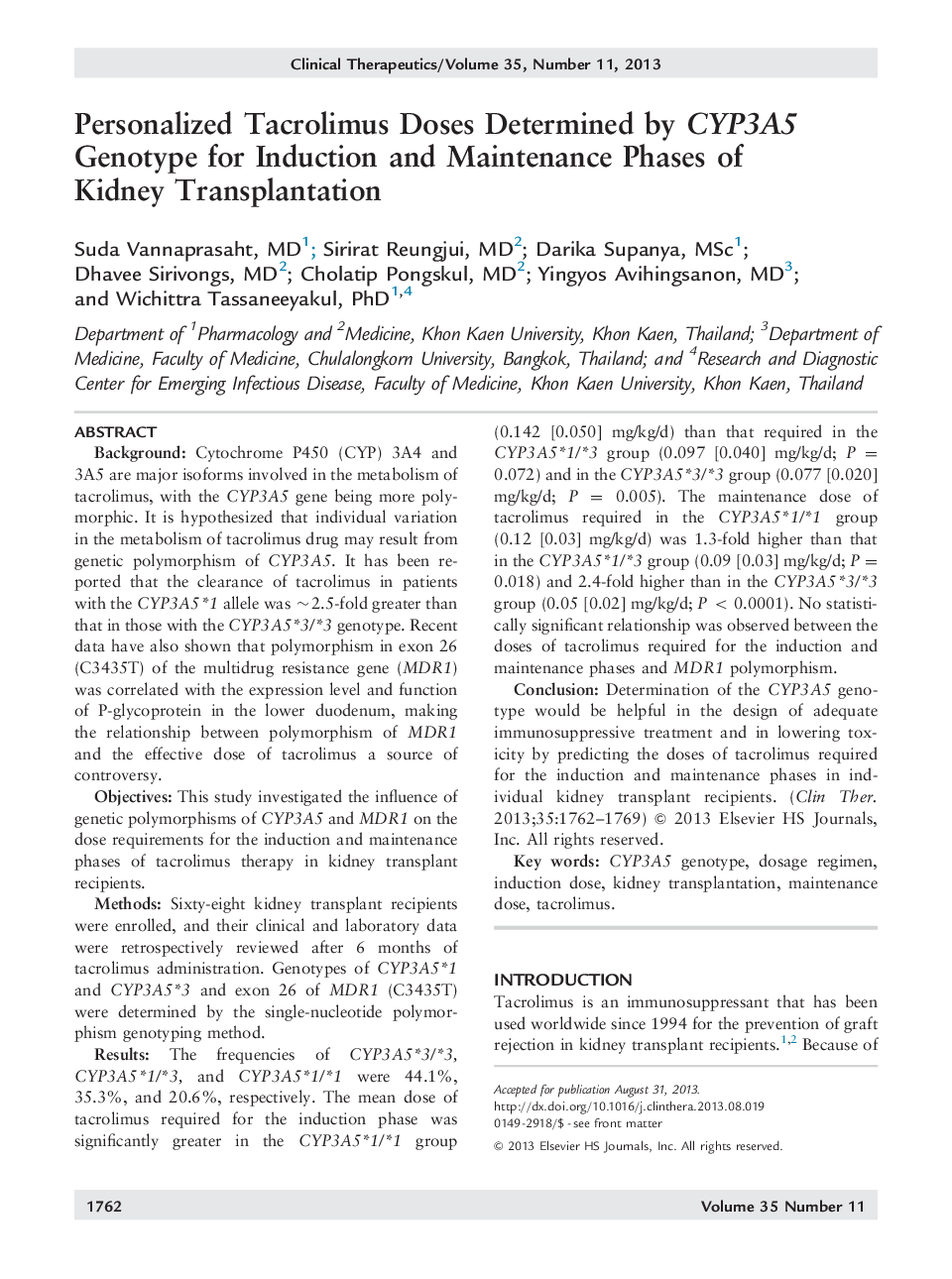| Article ID | Journal | Published Year | Pages | File Type |
|---|---|---|---|---|
| 5825599 | Clinical Therapeutics | 2013 | 8 Pages |
BackgroundCytochrome P450 (CYP) 3A4 and 3A5 are major isoforms involved in the metabolism of tacrolimus, with the CYP3A5 gene being more polymorphic. It is hypothesized that individual variation in the metabolism of tacrolimus drug may result from genetic polymorphism of CYP3A5. It has been reported that the clearance of tacrolimus in patients with the CYP3A5*1 allele was ~2.5-fold greater than that in those with the CYP3A5*3/*3 genotype. Recent data have also shown that polymorphism in exon 26 (C3435T) of the multidrug resistance gene (MDR1) was correlated with the expression level and function of P-glycoprotein in the lower duodenum, making the relationship between polymorphism of MDR1 and the effective dose of tacrolimus a source of controversy.ObjectivesThis study investigated the influence of genetic polymorphisms of CYP3A5 and MDR1 on the dose requirements for the induction and maintenance phases of tacrolimus therapy in kidney transplant recipients.MethodsSixty-eight kidney transplant recipients were enrolled, and their clinical and laboratory data were retrospectively reviewed after 6 months of tacrolimus administration. Genotypes of CYP3A5*1 and CYP3A5*3 and exon 26 of MDR1 (C3435T) were determined by the single-nucleotide polymorphism genotyping method.ResultsThe frequencies of CYP3A5*3/*3, CYP3A5*1/*3, and CYP3A5*1/*1 were 44.1%, 35.3%, and 20.6%, respectively. The mean dose of tacrolimus required for the induction phase was significantly greater in the CYP3A5*1/*1 group (0.142 [0.050] mg/kg/d) than that required in the CYP3A5*1/*3 group (0.097 [0.040] mg/kg/d; P = 0.072) and in the CYP3A5*3/*3 group (0.077 [0.020] mg/kg/d; P = 0.005). The maintenance dose of tacrolimus required in the CYP3A5*1/*1 group (0.12 [0.03] mg/kg/d) was 1.3-fold higher than that in the CYP3A5*1/*3 group (0.09 [0.03] mg/kg/d; P = 0.018) and 2.4-fold higher than in the CYP3A5*3/*3 group (0.05 [0.02] mg/kg/d; P < 0.0001). No statistically significant relationship was observed between the doses of tacrolimus required for the induction and maintenance phases and MDR1 polymorphism.ConclusionDetermination of the CYP3A5 genotype would be helpful in the design of adequate immunosuppressive treatment and in lowering toxicity by predicting the doses of tacrolimus required for the induction and maintenance phases in individual kidney transplant recipients.
